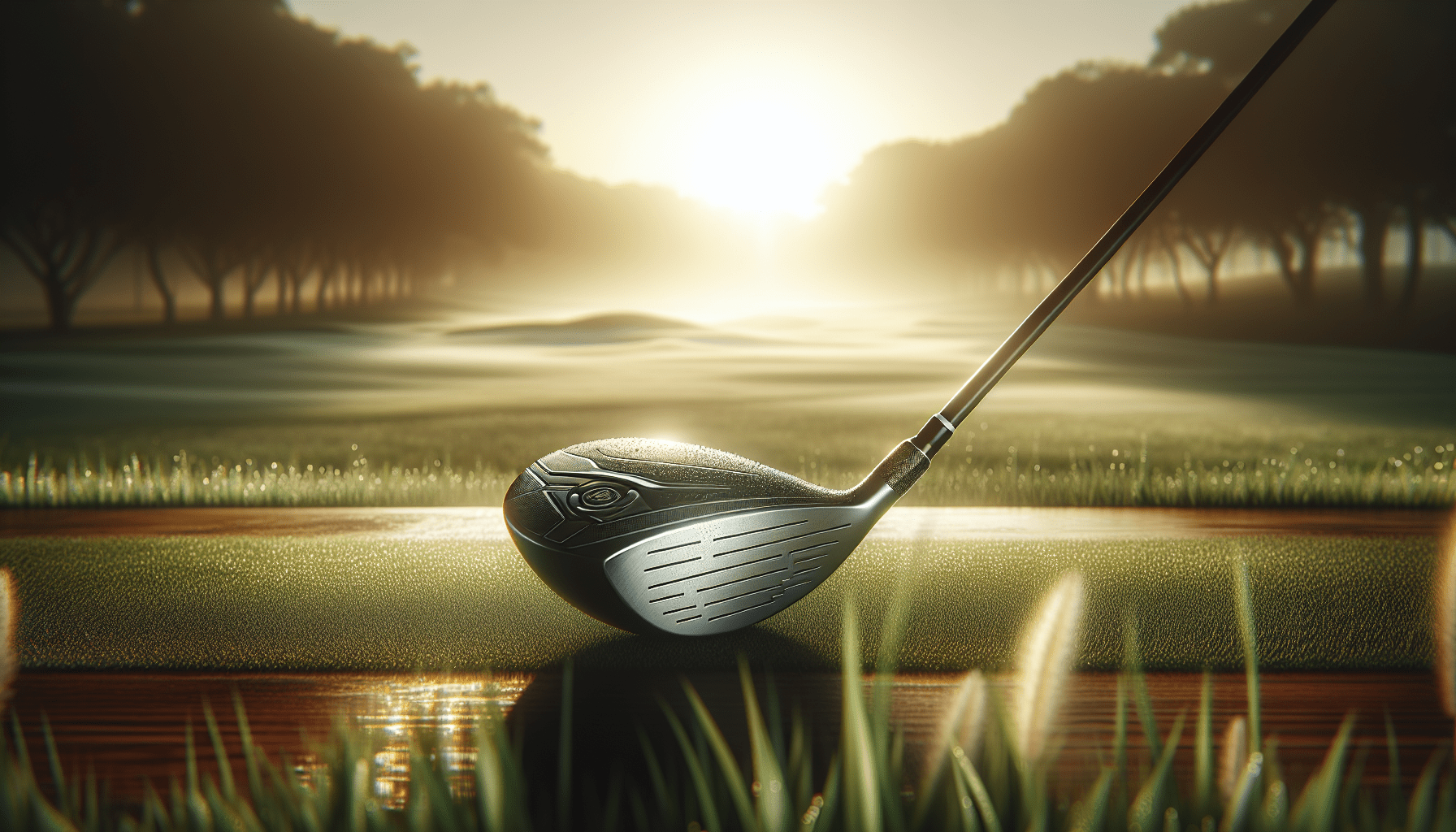Don't miss our holiday offer - up to 50% OFF!

Beginner’s Guide To Choosing The Best Golf Driver
Discover key tips for beginners on choosing the right golf driver to enhance your game. This guide covers the basics, types, and how to select the best driver for you.
Embarking on your golf journey opens up a world of lush greens and the exhilarating challenge of mastering your swing. The key to starting strong lies in selecting the right equipment, particularly when it comes to finding the perfect golf driver. This beginner’s guide is your friendly companion, offering you insightful tips and advice to help you choose the best golf driver that aligns with your playing style and enhances your game. With this guide in your hands, you’re on your way to making informed decisions that will pave the path to becoming a confident and skilled golfer.

Understanding the basics of Golf Drivers
What is a Golf Driver?
A golf driver is a type of club that’s designed to hit the ball the furthest. It’s typically used for the first stroke of each hole from the teeing ground. Unlike other clubs, drivers have the longest shafts, the largest heads, and the lowest loft. This unique combination allows you to deliver a powerful, long-distance shot, making them an indispensable part of your golf toolkit.
Why are Golf Drivers important?
Golf drivers play a crucial role in your game by setting the tone for each hole. A well-executed drive can significantly reduce your par, placing you in a favorable position on the fairway. They are important not just for their ability to cover large distances but also for their potential to shape your shot in terms of direction and trajectory. Hence, mastering your driver can lead to noticeable improvements in your overall game.
Distinction between Golf Drivers and other Golf Clubs
The primary distinction between golf drivers and other clubs lies in their design intended for specific purposes. Drivers are crafted to maximize distance with their low loft (usually between 8° and 13°) and long shafts, making them ideal for tee shots. On the other hand, other clubs such as irons, wedges, and putters feature higher lofts and are used for shorter distances, precision shots, and putting, respectively. This specialization ensures that you have the right tool at hand for every situation on the course.
Components of a Golf Driver
The Clubhead
The clubhead of a driver is its most recognizable feature, being the largest among all types of golf clubs. It’s designed to be as lightweight as possible, allowing you to swing faster and hence, hit the ball further. The size and shape of the clubhead also influence the aerodynamics of the swing and the ball’s trajectory post-impact.
The Shaft
The shaft connects the clubhead to the grip and significantly affects the swing. Its length, material, and flexibility can alter the dynamics of your swing and impact. Shafts are generally made from either steel or graphite, with graphite being the lighter option, offering greater swing speed and distance.
The Grip
The grip is where you hold the driver. It’s crucial for maintaining control and stability throughout your swing. Grips can wear down over time, so ensuring they are in good condition can make a noticeable difference in your game.
Understanding the Loft
The loft of a golf driver is the angle of the clubface that controls trajectory and affects distance. A higher loft translates to a higher, shorter trajectory, while a lower loft offers a lower, longer trajectory. Choosing the right loft for your swing speed and style is essential for maximizing your driving performance.
The Types of Golf Drivers
Standard Drivers
Standard drivers are the most common type and cater to a wide range of players. They typically come with a fixed loft and a non-adjustable head, making them a good choice for beginners and intermediate players.
Adjustable Drivers
Adjustable drivers offer the ability to modify the loft and sometimes the lie angle, allowing for personalized customization to suit your swing style or to adapt to different playing conditions.
Draw Drivers
Draw drivers are designed to minimize the slice—a common issue where the ball curves to the right for right-handed players (and to the left for left-handed players). They are engineered to encourage a right-to-left ball flight for right-handed golfers, making them useful for those struggling with a persistent slice.
Mini Drivers
Mini drivers, with a smaller head size compared to standard drivers, offer an interesting blend of control and distance. They’re easier to hit off the tee than standard drivers and can also be used effectively from the fairway, offering versatility.
Understanding Golf Driver Ratings
What is MOI?
MOI, or Moment of Inertia, measures a clubhead’s resistance to twisting when it hits the ball. A higher MOI indicates greater stability and forgiveness on off-center hits, making it an important factor for amateur golfers.
What is COR?
COR, or Coefficient of Restitution, represents the efficiency of energy transfer between the clubhead and the golf ball. A higher COR means more of your swing’s energy is transferred to the ball, potentially increasing distance.
What is CG?
CG, or Center of Gravity, refers to the point in the clubhead where it balances. The position of the CG can influence the launch and spin of the ball. Drivers with a low CG tend to promote a higher launch angle and less spin.
What is Loft?
As previously discussed, loft is the angle of the clubface, which is crucial in determining the trajectory and distance of the ball. Matching the loft to your swing speed and style can significantly enhance your performance.

Factors to Consider Before Buying a Golf Driver
Your Skill Level
Consider your skill level when choosing a driver. Beginners might benefit from drivers that offer more forgiveness, while experienced players may prefer drivers that offer more control and customization options.
Your Swing Speed
Your swing speed is a vital consideration because it directly impacts which loft and shaft flex you should choose. Higher swing speeds generally require lower lofts and stiffer shafts.
Your Budget
Golf drivers range in price from relatively affordable to premium. It’s important to find a balance between the features you need and what you’re willing to spend.
Preferred Shape and Size
The shape and size of the driver can influence your comfort and performance. Some players prefer larger clubheads for their forgiveness, while others might opt for smaller heads for better control.
Choosing the Right Loft for Your Golf Driver
The Impact of Loft on Ball Trajectory
The loft of your driver significantly affects the ball’s trajectory. A higher loft typically results in a higher shot, which can be advantageous in windy conditions or when trying to overcome obstacles.
The relationship between Swing Speed and Loft
The general rule is that slower swing speeds benefit from drivers with higher lofts, as they help achieve greater distance by promoting a higher launch angle. Conversely, higher swing speeds can opt for lower lofts to maximize control and efficiency.
Recommended Loft based on various Player Levels
Beginners and those with slower swing speeds might start with a loft between 10° and 12°. Mid-level players with moderate swing speeds could opt for lofts around 9° to 11°, while seasoned golfers with high swing speeds might benefit from lofts between 7° and 9°.
Choosing the Right Shaft for Your Golf Driver
Understanding Shaft Flex
Shaft flex refers to how much a shaft bends during the swing. The right flex for your game can improve your shot distance, accuracy, and feel. They range from Extra Stiff to Ladies, with the selection based largely on your swing speed.
Choosing between Graphite and Steel Shafts
Graphite shafts are lighter, helping increase swing speed and distance, and are the popular choice for drivers. Steel shafts, though heavier and offering more vibration feedback, are less common in drivers due to their weight.
The relation between Swing Speed and Shaft Flex
Generally, a faster swing speed requires a stiffer shaft to control the ball trajectory and improve accuracy, while slower swing speeds benefit from more flexible shafts that can help increase distance.
Understanding the Impact of Clubhead Size and Material
Effect of Clubhead Size on Driver Performance
The size of the driver’s clubhead can affect forgiveness and aerodynamics. Larger clubheads (up to the maximum allowed 460cc) offer more surface area, resulting in greater forgiveness on off-center hits.
Understanding the different Materials used in Clubheads
Clubheads are made from various materials, including titanium, steel, and carbon. Titanium is lightweight and strong, allowing for larger clubhead sizes without increasing weight. Steel is durable and cost-effective but heavier. Carbon, used in composite drivers, reduces weight in the clubhead, which can be redistributed to optimize performance.
Choosing between Titanium, Steel, and Carbon clubheads
Your choice should be based on your preferences for weight, feel, and the performance characteristics you prioritize. Titanium and carbon are excellent for reducing overall weight and increasing swing speed, while steel might offer a more traditional feel and durability at a lower cost.
Adjustable Features in Golf Drivers
The Importance of Adjustable Weights
Adjustable weights in a driver can change the club’s CG and influence the ball flight path. Moving the weights around can help correct a slice or a hook, or adjust the launch angle and spin rate.
The Benefit of Adjustable Hosel
An adjustable hosel allows you to change the loft and lie angles of the clubhead, enabling you to customize your driver’s performance based on your swing or the conditions on the course.
How to Use Adjustable Features to Improve your Game
Utilizing adjustable features requires experimentation and understanding of how each adjustment affects your shots. Adjustments can help you fine-tune your driver to your specific needs, potentially leading to significant improvements in distance and accuracy.
Frequently Asked Questions about Golf Drivers
Should a beginner use a 460cc driver?
Yes, a beginner can benefit from using a 460cc driver due to its larger sweet spot and increased forgiveness on off-center hits. It can help build confidence as you develop your skills.
How often should I replace my golf driver?
While there’s no set rule, a good guideline is to consider upgrading every 5 years or so, as technology advances can offer improved performance. However, if your driver is well-maintained and still suits your game, there’s no urgent need to replace it.
Does a more expensive driver mean better results?
Not necessarily. While more expensive drivers might offer advanced technology and customization options, the best driver for you is one that suits your swing, skill level, and preferences. Sometimes, a mid-range driver might perform just as well for your game as a high-end model.
